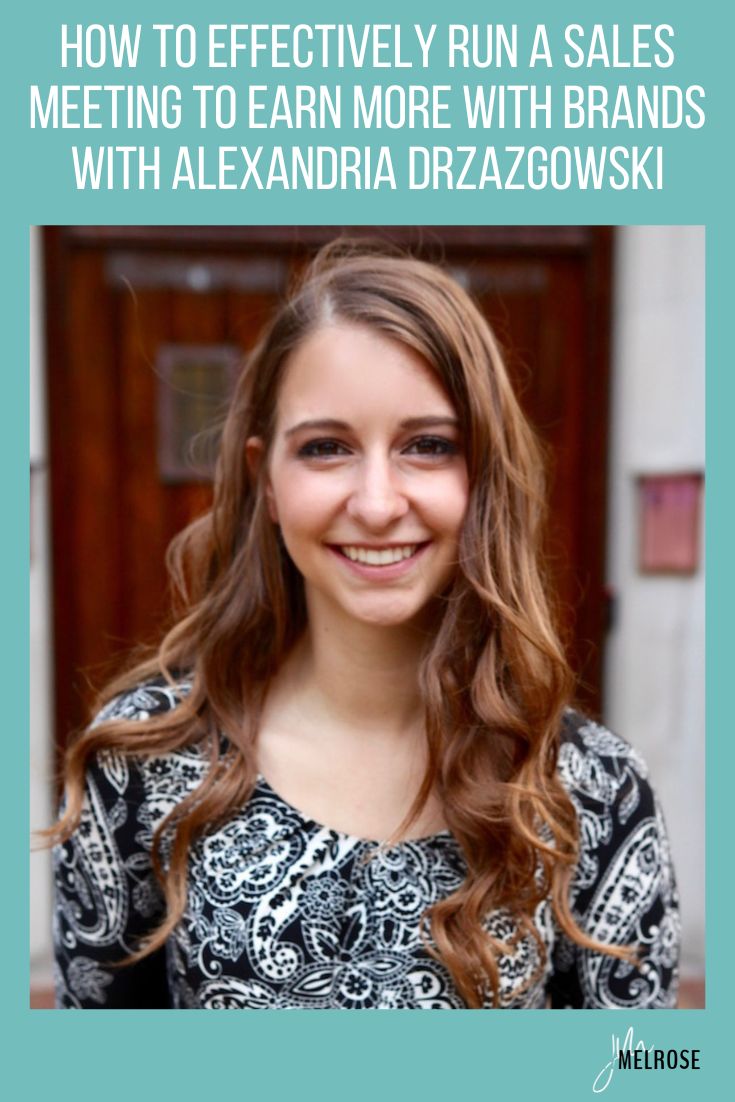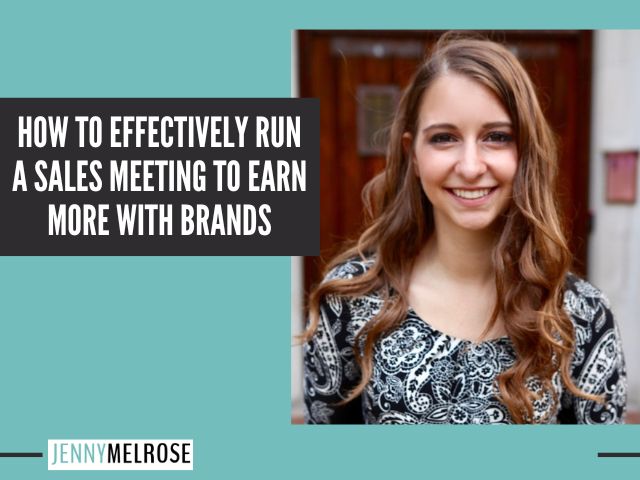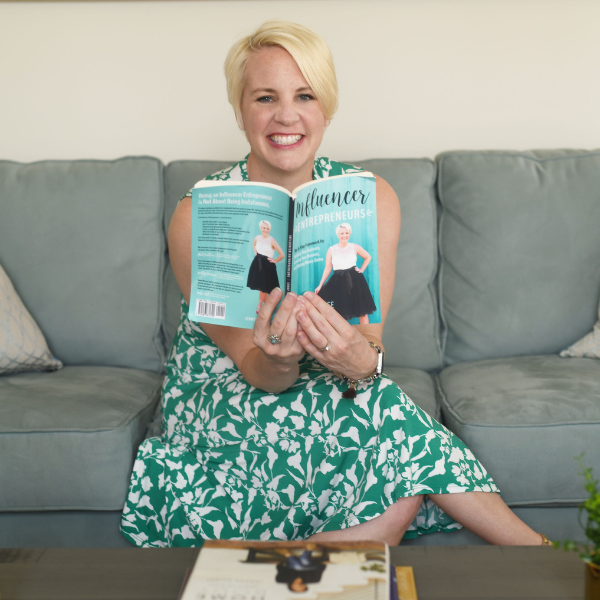Discover expert tips from Alexandria Drzazgowski on how to run a successful sales meeting that boosts earnings with top brands.
Learn actionable strategies to enhance your pitch, build relationships, and close more deals.
IE 413: How to Effectively Run a Sales Meeting to Earn More with Brands with Alexandria Drzazgowski

Alexandria runs a food blog called the Foreign Fork where she cooks meals from every country in the world.
She started her blog in 2019 after graduating from college. She spent six months by herself backpacking through Europe and visited 15 different countries. She wanted to find a common through line that connected all of the countries so she took cooking classes in every country.
She found out that there is so much you can learn about culture, customs, religion, geography, history, and more through the food of that country. She came home and started a food blog to cook meals from every country in the world.
That was her side job when she started her full-time job in sales. She did sales training for two years and had a successful career in sales, becoming one of the top sales representatives in her company and earning trips. She left that job to work her blog full-time and has been doing it since 2021.
How important is it to research a brand’s values and products before the meeting, and how does this research shape the conversation?
It is important to do your research ahead of time not only for success in the meeting but proper research beforehand will also help you get the meeting.
Brands get lots of emails and direct messages saying “I really like your products. Can we work together?” After a while, that probably gets boring for them.
When you do your research, you will find out what launches they have coming up, what products they are currently promoting, who their competition is and how they are setting themselves apart. You can use all of that information when you pitch to the companies to stand and show them you know more about their products and business than other people who are reaching out to them.
Hopefully, that will give you a step ahead when you are trying to get the meeting. In the meeting it will fully form your conversation. You want to speak to them in a way that shows that you care about their business.
It shows them you can use that knowledge along with your specific skills and their goals to work together to form a customized partnership that will benefit both of you. Having the information beforehand will lead to that conversation in the right direction.
Jenny recommends looking at their tag lines to see what their values are and looking at their “about” section to see what their mission statement is. You learn so much about a business and where their values are when you take the time to understand who the founders are and why they started the business so you can align with them.
Can you share any techniques to establish a rapport quickly with brand representatives who are new to you?
Building rapport is the first step of the framework for the six steps of a sale. Selling to someone starts way before you start the conversation about business.
The first step to a sale is getting someone to like you. Building a rapport is more important than people think. You want to make sure people feel connected to you on a personal level and they know and like you as a person.
In the same way that you research the business, you want to research the person that you are going to be talking to.
Alexandria tells about a recent encounter with a person who lives in South Africa. She looked her up on LinkedIn and asked more personal questions that were specific to South Africa. She used that to connect to her outside of business.
You can ask about their weekend or how they got into their current role. Find things that are common ground for both of you but not necessarily related to business. You want to try to form a personal relationship with them before you get into the nitty gritty work stuff.
LinkedIn is a great place to help you make a one-to-one relationship with someone because their profile will give you all of the goods. Alexandria finds it to be very valuable even though she often has to push through the intimidation of LinkedIn. You can find a lot of ways to build rapport from their profile.
The fear often comes from thinking of LinkedIn as more corporate related. As a small business owners or entrepreneurs, we are intimidated and think we are not worthy enough to have those conversations. In reality, it is the perfect place to make connections when you are trying to pitch a corporate brand.
How do you effectively present your value proposition to a brand?
This is the place where people think that the bulk of the conversation will take place. When someone comes in, the content creator thinks about how they are going to run the sales meeting. They usually try to figure out how they are going to tell them about themselves and how they will close the deal.
There are so many other pieces that have to be in place for you to have an effective presentation and close. In order to effectively present your solution, you have to start the process far before you tell them what you do.
You need to spend the majority of the meeting asking the brand questions about themselves. Some examples are:
- What are their goals for this campaign?
- What are successful campaigns they have had in the past?
- What competitors are they trying to outshine and how do they want to do that?
Spend the majority of the time learning about them. You are not going to be able to effectively communicate your value until you know what is valuable to them. Ask questions about their goals, their dreams, their history, and what they are looking for.
Once you have that, you can think of yourself more as a consultant rather than someone who is just trying to sell your service. You can take the answers to the questions they have given you and think about the best services you have and can offer them that align with what they told you.
Use the questions asked from your probing and add them to your presentation. If they told you their goal is to reach a younger audience, you can tell them your solution is to work with brands on TikTok because that is where your younger audience is.
How do you make sure the brand understands the ROI (return on investment) your product or service offers?
Jenny has found that many people struggle with this piece of the presentation because of the numbers. Alexandria encourages you to use past examples of things that have been successful.
She has a visual document that she shares with them and a few pieces of collateral available waiting to be used when she figures out the best one that fits their business. Then, she will share those and have analytics of past success with clients.
For example, maybe a collaboration she did for a brand increased their post engagement by 40% over their usual engagement. She might have screenshots of comments or direct messages she has received showing someone who has used the product as a result of her efforts and then left a good review.
Those things show social proof and success of previous work that she has done with other brands. She creates a visual graph or other things that they can see instead of just verbally saying it. You are already collecting these anyway so you can show the brands you are working with the value you have brought and will continue to bring in a long-term relationship.
You should have a folder in your phone or Google drive to keep track of the analytics so you can pull the ones that will impress the brand that you are talking to.
What metrics or KPIs do you track to measure the success of brand partnerships initiated through these sales meetings?
After posting a video or other type of post, Alexandria sends them a campaign insights report to the company. It walks through the analytics of reach, click-through rate, specific comments on the posts, engagement on the post, and link-click.
What advice would you give to sales professionals looking to improve their approach to brand meetings?
The most important thing to do is to learn how to be comfortable doing meetings. Practice before you actually speak to the brand. Here is a broad overview of the six steps of the sale:
- Building Rapport – Connecting with the brand on a personal level and establishing a connection with them.
- Setting the Agenda – This is where you set the expectations for the brand and indicate they will be following your lead.
- The Executive Overview – Spend a brief time talking about yourself, your experience, and why you are the best person for the job. This is your opportunity to brag about yourself, tell your history, give analytics, and ways that you have successfully worked with partnerships in the past.
- Probing – Asking a lot of questions about the brand. Have a list of questions ready and adjust those based on the way the conversation is going.
- Solution – This is mentioned above. It is important to use a lot of visuals.
- The Close
Practice these steps. Just listening (or reading) about them is one thing but practicing them will help you get comfortable with them. You don’t want your first time walking through these steps to be when you are talking to a brand.
Find a partner or a friend and use the framework to practice and get comfortable with those steps. Alexandria has a course that goes into these.
The close is the most intimidating. Many of us go into this step without confidence and try to make ourselves smaller because we don’t want to feel like we are being overly salesy.
What is one tip that has helped you in closing?
For smaller businesses, fake it until you make it. It is intimidating but this is your time to be bold, confident and believe in your value and pricing.
If you can be confident, the brand will pick up on this. If you are timid and scared, the brand will pick up on that and not think that you are worth your value.
Closing becomes easy when you do the other steps first. If you go into it with a five-minute dissertation of how you work with brands and then ask if they want to collaborate with you, that will probably not go over very well. If you know the framework and steps, the sixth step becomes easy because you have made the personal connection.
You have shown them you take control and are a great person to be working with in this field because you have bragged about yourself. Then, you spend time to tie that into your offering.
The sixth step of closing is easier because you have shown that you care about them and building value. You can present your solution and pricing confidently. You can be assumptive and tell the brand what it would be like to work with you. You have already communicated your value proposition very well.
There are a lot of different types of closings and ways that you can present your solution. The calendar close shows them what the timing would be for their brand. For example, “The 4th quarter is coming up and we want to get this ready for you by the end of the year.” This is an effective way to close but it will be based on your comfortability.
Probing Question Guide
The 4th step of the sale is probing. The Probing Questions Guide guide walks you through five of the most common types of probing questions and gives you examples of different businesses that are trying to sell their services so you can learn how to tailor it to your business.
Action Steps:
- If you liked this episode of Influencer Entrepreneurs, please subscribe and leave a fabulous review!
- Join the conversation on Instagram by tagging Jenny when you’re listening to the podcast. She’ll send you a personal message whenever you tag her.


